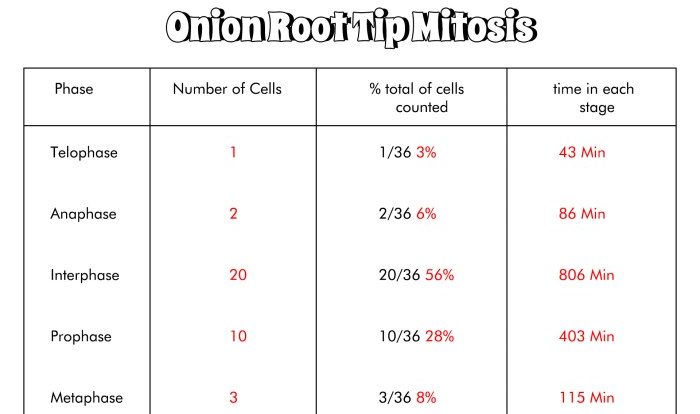The Cell Cycle and Mitosis Worksheet Answer Key PDF provides a comprehensive overview of the fundamental concepts of cell division. This resource serves as an invaluable tool for students and educators alike, offering a detailed explanation of the cell cycle and mitosis, along with practical exercises and thought-provoking questions.
The content of this worksheet covers a wide range of topics, including the stages of the cell cycle, the phases of mitosis, the factors that regulate cell division, and the applications of cell cycle and mitosis knowledge in medicine and cancer research.
Cell Cycle and Mitosis
The cell cycle is a fundamental process in biology, encompassing the series of events that a cell undergoes during its lifetime, from its origin to its division or death. It comprises two main phases: interphase and the mitotic phase (M phase).
Cell Cycle Overview, Cell cycle and mitosis worksheet answer key pdf
The cell cycle is a highly regulated process that can be divided into several distinct stages:
- Interphase: Interphase is the longest phase of the cell cycle and includes three sub-stages: G1, S, and G2.
- G1 phase (first gap): During G1, the cell grows, synthesizes proteins, and prepares for DNA replication.
- S phase (synthesis): In S phase, the cell’s DNA is replicated.
- G2 phase (second gap): During G2, the cell checks for DNA damage and prepares for mitosis.
- M phase (mitotic phase): M phase is the shortest phase of the cell cycle and includes mitosis and cytokinesis.
Mitosis
Mitosis is the process by which a cell divides into two genetically identical daughter cells. It consists of four distinct phases:
- Prophase: During prophase, the chromosomes condense and become visible, and the nuclear envelope breaks down.
- Metaphase: In metaphase, the chromosomes align at the equator of the cell.
- Anaphase: During anaphase, the sister chromatids of each chromosome separate and move to opposite poles of the cell.
- Telophase: In telophase, the chromosomes reach the poles of the cell, the nuclear envelope reforms, and the cell begins to divide into two daughter cells through cytokinesis.
Cell Cycle Regulation
The cell cycle is tightly regulated by a complex network of proteins, including cyclins and cyclin-dependent kinases (CDKs). Cyclins and CDKs work together to ensure that the cell cycle proceeds in an orderly manner. In addition to cyclins and CDKs, several checkpoints are in place throughout the cell cycle to ensure that the cell is ready to progress to the next stage.
These checkpoints include the G1 checkpoint, the G2 checkpoint, and the M checkpoint.
Worksheet Analysis
The provided worksheet on cell cycle and mitosis covers several key concepts, including the stages of the cell cycle, the phases of mitosis, and the regulation of the cell cycle. The worksheet questions assess students’ understanding of these concepts and their ability to apply their knowledge to different scenarios.
Applications of Cell Cycle and Mitosis Knowledge
Understanding cell cycle and mitosis is essential in medicine. For example, disruptions in the cell cycle can lead to cancer, a disease characterized by uncontrolled cell division. Furthermore, cell cycle regulation is a target for cancer treatment. By understanding how the cell cycle is regulated, scientists can develop drugs that can inhibit cell division in cancer cells.
Expert Answers: Cell Cycle And Mitosis Worksheet Answer Key Pdf
What is the cell cycle?
The cell cycle is the process by which a cell grows, divides, and dies.
What are the stages of mitosis?
The stages of mitosis are prophase, metaphase, anaphase, and telophase.
What factors regulate cell division?
Cell division is regulated by a variety of factors, including growth factors, hormones, and checkpoints.
